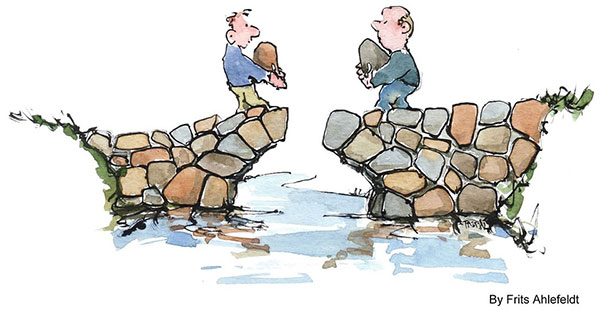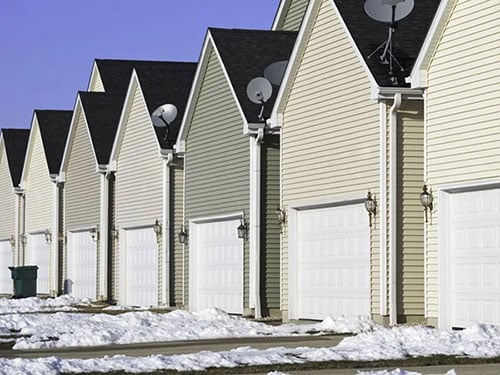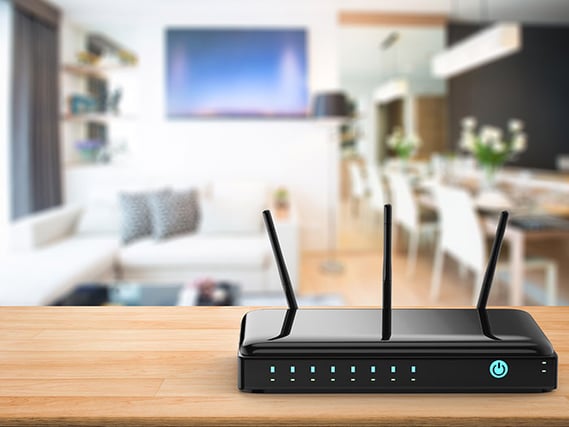Does it sometimes seem like your HOA board is on the "Bridge to Nowhere?" One-way communication feels that way. In fact, it isn't really communication at all. True communication has a destination on each end of the bridge and each of those destinations has two lanes: expressing and receiving information.
What's wrong with the bridge we already have?
Before you can improve on something, it helps to have a clear picture of where the problems are. Take an honest look at what's been going on between your HOA board and the association members. Perhaps you've already tried (several times) to connect with the members of your HOA, but it just doesn't seem to work. They won't listen. Or they seem to listen and then ignore what was said. The board members wonder why they can't get anything through to the association members.
The approach
The Bridge to Nowhere, located in Southern California was intended to connect two places, but due to flooding, the original road was re-routed and now the bridge is part of a hiking trail. However, its use as a trail is often hampered because the trail going to it washes out, leaving the bridge practically inaccessible. In building a communication bridge, consider the approach—from both sides.
Be knowledgeable and confident in your purpose for the communication in the first place. Make sure the reason is clear and easy to see. As much as possible, prepare the other end of the bridge as well. Is it evident to the association members why they need to pay attention to the board and welcome the information into their lives? And do they have a clear way to approach the board with reactions to what the board says or to express both related and unrelated concerns that are common to the community? Is the board prepared to welcome what the owners say?
Two lanes
Does your communication bridge accommodate traffic going in two directions? Help your association members be prepared to receive your communication and deliver it in a means that is relevant and relatable.
Speak the same language as the members. If you are trying to communicate an issue that the board has researched in-depth or if it is closely related to your personal interests or profession, it might be easy to slip into using jargon. If the members don't know what you're saying or if they think you're being arrogant, they will likely turn you off.
Be direct
What if bridges meandered the way a scenic road up a mountain does, switching back and forth? While both engineering feats serve a purpose, that purpose is not the same and cannot be achieved by the same means. Know what you have to say and say it as concisely as possible.
Maintenance
Even the best bridges require maintenance. Potholes form; supports and structure are subject to forces of nature and friction; the vehicles using it change in size and shape. Over time, the communication bridge between the board and the association members will need attention. The people on the board and in the association fluctuate, economics change, the social environment changes, and nature can affect the physical environment too.
Monitor the use of your communication bridge and be aware of potential problems as they arise. Different communication modes are appropriate at different times. While communicating through brief, direct emails may work at times, there will be other times a regular newsletter will be necessary or maybe you can use bills posted on bulletin boards. Sometimes phone calls are more helpful and other times just keeping the bridge clear by friendly, personal communication like a "hello" when you meet at a mailbox will support more weighty business communications down the road.
Transparency
A bridge smothered in fog may be daunting to traverse. If your association members feel they can't see what's going on, they are less likely to approach and you're left with a communication gap instead of a bridge. Do not shroud important details in mystery and allow members to stumble onto them. Keep relevant information easily visible and accessible.
Structure
Every part of a bridge must be structurally sound to create a safe, positive transfer from one place to another. Make sure the structure supporting your communication bridge is sound. Are you using a management company? They are an important part of your structure. Make sure they are clear on the intent of the board and that the association members know how to access both the management company and the board with their concerns.
For more information about how a management company can improve communications between your HOA and association members and traverse the troubled waters of the Biggest Communication Challenges, contact us at RealManage today.





